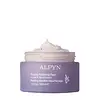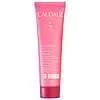What's inside
What's inside
 Key Ingredients
Key Ingredients

 Benefits
Benefits

 Concerns
Concerns

 Ingredients Side-by-side
Ingredients Side-by-side

Water
Skin ConditioningGlycerin
HumectantHydrated Silica
AbrasiveCetearyl Alcohol
EmollientHydroxypropyl Starch Phosphate
Bentonite
AbsorbentGlyceryl Stearate Se
EmulsifyingHelianthus Annuus Seed Oil
EmollientSalix Nigra Bark Extract
Skin ProtectingGlycolic Acid
BufferingAzelaic Acid
BufferingFerulic Acid
AntimicrobialMelia Azadirachta Leaf Extract
Skin ConditioningVaccinium Uliginosum Berry Extract
Skin ConditioningCitric Acid
BufferingCitrus Limon Fruit Extract
MaskingMalic Acid
BufferingTartaric Acid
BufferingAnanas Sativus Fruit Extract
Skin ConditioningCitrus Aurantium Dulcis Peel Extract
Emulsion StabilisingCitrus Clementina Peel Oil
MaskingCitrus Paradisi Fruit Extract
Skin ConditioningCitrus Reticulata Peel Extract
Skin ConditioningFragaria Vesca Fruit Extract
AstringentLavandula Angustifolia Flower/Leaf/Stem Extract
MaskingMalus Domestica Fruit Extract
AntioxidantPunica Granatum Seed Extract
Skin ConditioningRibes Nigrum Bud Extract
PerfumingRubus Occidentalis Fruit Extract
AstringentVaccinium Angustifolium Fruit Extract
Skin ProtectingVanilla Planifolia Fruit Extract
Skin ConditioningPyrus Malus Fruit Extract
Skin ConditioningLactic Acid
BufferingSodium Stearoyl Lactylate
EmulsifyingXanthan Gum
EmulsifyingBenzyl Alcohol
PerfumingCI 77891
Cosmetic ColorantBambusa Arundinacea Stem Extract
Skin ConditioningCaprylyl/Capryl Glucoside
CleansingCarrageenan
Potassium Sorbate
PreservativeFragaria Vesca Seed
AstringentGlucose
HumectantSimmondsia Chinensis Seed Oil
EmollientEclipta Prostrata Extract
Skin ConditioningDehydroacetic Acid
PreservativeMenthyl Lactate
MaskingSodium Phytate
Lactobacillus/Capsicum Frutescens Fruit Ferment Extract
Skin ConditioningMoringa Oleifera Seed Oil
EmollientLactobacillus/Pumpkin Ferment Extract
Skin ConditioningAloe Barbadensis Leaf Juice
Skin ConditioningSodium Hyaluronate
HumectantIsomalt
HumectantVaccinium Myrtillus Fruit/Leaf Extract
AstringentSaccharum Officinarum Extract
MoisturisingCitrus Aurantium Dulcis Fruit Extract
MaskingAcer Saccharum Extract
Skin ConditioningLeuconostoc/Radish Root Ferment Filtrate
AntimicrobialLactobacillus Ferment
Skin ConditioningLecithin
EmollientVitis Vinifera Fruit Cell Extract
Skin ConditioningWater, Glycerin, Hydrated Silica, Cetearyl Alcohol, Hydroxypropyl Starch Phosphate, Bentonite, Glyceryl Stearate Se, Helianthus Annuus Seed Oil, Salix Nigra Bark Extract, Glycolic Acid, Azelaic Acid, Ferulic Acid, Melia Azadirachta Leaf Extract, Vaccinium Uliginosum Berry Extract, Citric Acid, Citrus Limon Fruit Extract, Malic Acid, Tartaric Acid, Ananas Sativus Fruit Extract, Citrus Aurantium Dulcis Peel Extract, Citrus Clementina Peel Oil, Citrus Paradisi Fruit Extract, Citrus Reticulata Peel Extract, Fragaria Vesca Fruit Extract, Lavandula Angustifolia Flower/Leaf/Stem Extract, Malus Domestica Fruit Extract, Punica Granatum Seed Extract, Ribes Nigrum Bud Extract, Rubus Occidentalis Fruit Extract, Vaccinium Angustifolium Fruit Extract, Vanilla Planifolia Fruit Extract, Pyrus Malus Fruit Extract, Lactic Acid, Sodium Stearoyl Lactylate, Xanthan Gum, Benzyl Alcohol, CI 77891, Bambusa Arundinacea Stem Extract, Caprylyl/Capryl Glucoside, Carrageenan, Potassium Sorbate, Fragaria Vesca Seed, Glucose, Simmondsia Chinensis Seed Oil, Eclipta Prostrata Extract, Dehydroacetic Acid, Menthyl Lactate, Sodium Phytate, Lactobacillus/Capsicum Frutescens Fruit Ferment Extract, Moringa Oleifera Seed Oil, Lactobacillus/Pumpkin Ferment Extract, Aloe Barbadensis Leaf Juice, Sodium Hyaluronate, Isomalt, Vaccinium Myrtillus Fruit/Leaf Extract, Saccharum Officinarum Extract, Citrus Aurantium Dulcis Fruit Extract, Acer Saccharum Extract, Leuconostoc/Radish Root Ferment Filtrate, Lactobacillus Ferment, Lecithin, Vitis Vinifera Fruit Cell Extract
Water
Skin ConditioningVitis Vinifera Fruit Water
Skin ConditioningDicaprylyl Ether
EmollientGlycerin
HumectantButyrospermum Parkii Butter Extract
Skin ConditioningHexyldecanol
EmollientHexyldecyl Laurate
EmollientPalmitoyl Grape Seed Extract
Skin ConditioningBehenyl Alcohol
EmollientGlyceryl Stearate
EmollientAcrylates/C10-30 Alkyl Acrylate Crosspolymer
Emulsion StabilisingErythritol
HumectantLecithin
EmollientMannitol
HumectantTocopherol
AntioxidantCaprylyl Glycol
EmollientHelianthus Annuus Seed Oil
EmollientXanthan Gum
EmulsifyingSodium Benzoate
MaskingVitis Vinifera Juice
AntioxidantGlycine Soja Sterols
EmollientButylene Glycol
HumectantChamomilla Recutita Flower Extract
MaskingSodium Hydroxide
BufferingCitric Acid
BufferingSodium Carboxymethyl Beta-Glucan
CleansingSodium Citrate
BufferingSodium Phytate
Potassium Sorbate
PreservativeBiosaccharide Gum-1
HumectantSodium Hyaluronate
HumectantSodium Levulinate
Skin ConditioningGlyceryl Caprylate
EmollientHomarine Hcl
Skin ConditioningSodium Anisate
AntimicrobialAlcohol
AntimicrobialAcetyl Tetrapeptide-15
Skin ConditioningParfum
MaskingWater, Vitis Vinifera Fruit Water, Dicaprylyl Ether, Glycerin, Butyrospermum Parkii Butter Extract, Hexyldecanol, Hexyldecyl Laurate, Palmitoyl Grape Seed Extract, Behenyl Alcohol, Glyceryl Stearate, Acrylates/C10-30 Alkyl Acrylate Crosspolymer, Erythritol, Lecithin, Mannitol, Tocopherol, Caprylyl Glycol, Helianthus Annuus Seed Oil, Xanthan Gum, Sodium Benzoate, Vitis Vinifera Juice, Glycine Soja Sterols, Butylene Glycol, Chamomilla Recutita Flower Extract, Sodium Hydroxide, Citric Acid, Sodium Carboxymethyl Beta-Glucan, Sodium Citrate, Sodium Phytate, Potassium Sorbate, Biosaccharide Gum-1, Sodium Hyaluronate, Sodium Levulinate, Glyceryl Caprylate, Homarine Hcl, Sodium Anisate, Alcohol, Acetyl Tetrapeptide-15, Parfum
 Reviews
Reviews

Ingredients Explained
These ingredients are found in both products.
Ingredients higher up in an ingredient list are typically present in a larger amount.
Citric Acid is an alpha hydroxy acid (AHA) naturally found in citrus fruits like oranges, lemons, and limes.
Like other AHAs, citric acid can exfoliate skin by breaking down the bonds that hold dead skin cells together. This helps reveal smoother and brighter skin underneath.
However, this exfoliating effect only happens at high concentrations (20%) which can be hard to find in cosmetic products.
Due to this, citric acid is usually included in small amounts as a pH adjuster. This helps keep products slightly more acidic and compatible with skin's natural pH.
In skincare formulas, citric acid can:
While it can provide some skin benefits, research shows lactic acid and glycolic acid are generally more effective and less irritating exfoliants.
Most citric acid used in skincare today is made by fermenting sugars (usually from molasses). This synthetic version is identical to the natural citrus form but easier to stabilize and use in formulations.
Read more about some other popular AHA's here:
Learn more about Citric AcidGlycerin is already naturally found in your skin. It helps moisturize and protect your skin.
A study from 2016 found glycerin to be more effective as a humectant than AHAs and hyaluronic acid.
As a humectant, it helps the skin stay hydrated by pulling moisture to your skin. The low molecular weight of glycerin allows it to pull moisture into the deeper layers of your skin.
Hydrated skin improves your skin barrier; Your skin barrier helps protect against irritants and bacteria.
Glycerin has also been found to have antimicrobial and antiviral properties. Due to these properties, glycerin is often used in wound and burn treatments.
In cosmetics, glycerin is usually derived from plants such as soybean or palm. However, it can also be sourced from animals, such as tallow or animal fat.
This ingredient is organic, colorless, odorless, and non-toxic.
Glycerin is the name for this ingredient in American English. British English uses Glycerol/Glycerine.
Learn more about GlycerinHelianthus Annuus Seed Oil is the oil derived from the seeds of a Sunflower. Sunflower seed oil is non-fragrant. It is an emollient, meaning it helps to soften the skin.
Sunflower seed oil contains many fatty acids. The fatty acids found in sunflower seeds include (from highest amount to least): linoleic acid, myristic acid, palmitic acid, stearic acid, arachidic acid, oleic acid, and linolenic acid.
These fatty acids help the skin create ceramides. Ceramides play a role in repairing the skin barrier.
Helianthus Annuus Seed Oil helps moisturize the skin. This in turn helps the skin look more rejuvenated and smoother.
Sunflowers are rich in vitamin E.
Historians believe Indigenous cultures of North America domesticated sunflowers before corn. Thus they relied on sunflower oil for a variety of uses. One such use is moisturizing skin and hair.
Sunflower seed oil may not be fungal acne safe. We recommend speaking with a professional if you have any concerns.
Learn more about Helianthus Annuus Seed OilLecithin is a term for a group of substances found in the cell membranes of plants, animals, and humans. They are made up of mixture of phospholipids.
This ingredient has emollient and emulsifying properties.
As an emollient, lecithen helps soften the skin and creates a barrier to keep moisture in.
As an emulsifier, it also helps prevent water and oil ingredients from separating. Lecithin can also help ingredients be better absorbed by the skin.
This is because the phospholipids in lecithin produce liposomes. Liposomes help other ingredients get through the skin barrier.
Depending on the source of this ingredient, lecithin may not be fungal acne safe. This is because some sources of lecithin come from soybean oil, which may feed the malassezia yeast that feeds fungal acne.
We recommend reaching out to the brand you are purchasing from to inquire about the source of their lecithin.
Some other names for this ingredient include soy lecithin and deoiled soy lecithin.
Learn more about LecithinPotassium Sorbate is a preservative used to prevent yeast and mold in products. It is commonly found in both cosmetic and food products.
This ingredient comes from potassium salt derived from sorbic acid. Sorbic acid is a natural antibiotic and effective against fungus.
Both potassium sorbate and sorbic acid can be found in baked goods, cheeses, dried meats, dried fruit, ice cream, pickles, wine, yogurt, and more.
You'll often find this ingredient used with other preservatives.
Learn more about Potassium SorbateSodium Hyaluronate is hyaluronic acid's salt form. It is commonly derived from the sodium salt of hyaluronic acid.
Like hyaluronic acid, it is great at holding water and acts as a humectant. This makes it a great skin hydrating ingredient.
Sodium Hyaluronate is naturally occurring in our bodies and is mostly found in eye fluid and joints.
These are some other common types of Hyaluronic Acid:
Learn more about Sodium HyaluronateSodium Phytate is the synthetic salt form of phytic acid. Phytic acid is an antioxidant and can be found in plant seeds.
Sodium Phytate is a chelating agent. Chelating agents help prevent metals from binding to water. This helps stabilize the ingredients and the product.
Water. It's the most common cosmetic ingredient of all. You'll usually see it at the top of ingredient lists, meaning that it makes up the largest part of the product.
So why is it so popular? Water most often acts as a solvent - this means that it helps dissolve other ingredients into the formulation.
You'll also recognize water as that liquid we all need to stay alive. If you see this, drink a glass of water. Stay hydrated!
Learn more about WaterXanthan gum is used as a stabilizer and thickener within cosmetic products. It helps give products a sticky, thick feeling - preventing them from being too runny.
On the technical side of things, xanthan gum is a polysaccharide - a combination consisting of multiple sugar molecules bonded together.
Xanthan gum is a pretty common and great ingredient. It is a natural, non-toxic, non-irritating ingredient that is also commonly used in food products.
Learn more about Xanthan Gum